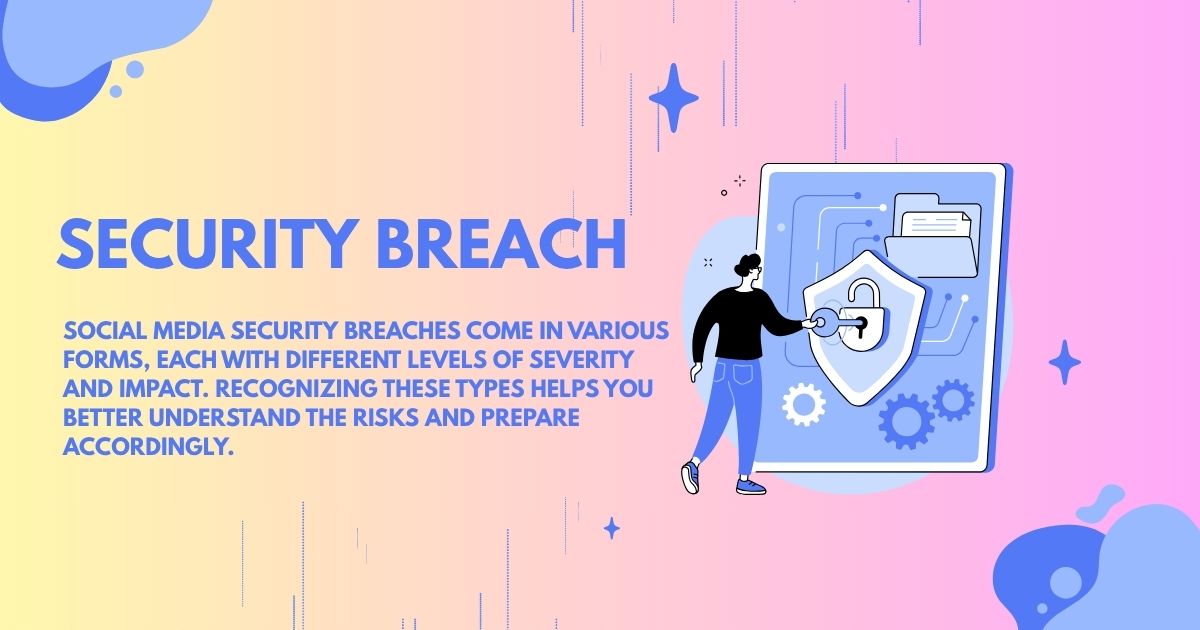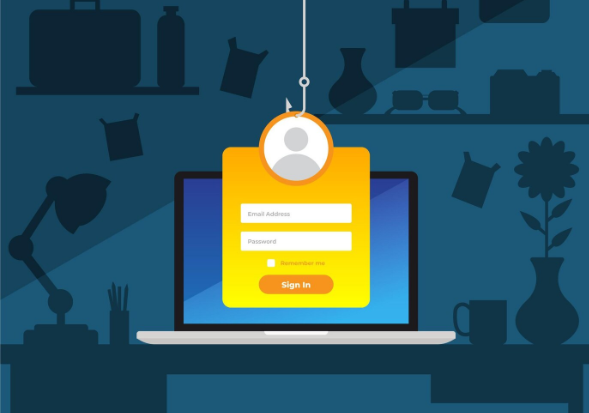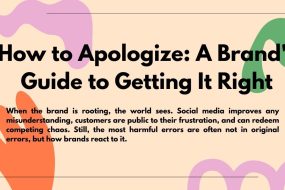
Your Instagram account gets hacked. Your Facebook data ends up in the wrong hands. Your Twitter profile starts posting suspicious links. These scenarios might sound familiar because social media security breaches have become increasingly common, affecting millions of users worldwide.
A social media security breach occurs when unauthorized individuals gain access to social media platforms, user accounts, or sensitive data without permission. These incidents can range from individual account takeovers to massive platform-wide data exposures that compromise personal information of millions of users.
Understanding what constitutes a security breach on social media platforms is crucial for protecting your digital presence. This guide will explain the different types of breaches, how they happen, their consequences, and most importantly, how you can safeguard your accounts from these growing threats.
Types of Social Media Security Breaches
Social media security breaches come in various forms, each with different levels of severity and impact. Recognizing these types helps you better understand the risks and prepare accordingly.
Account Takeovers
Account takeovers represent the most personal type of breach. Hackers gain control of individual user accounts through stolen passwords, phishing attacks, or exploiting weak security settings. Once inside, they can post malicious content, send spam messages to your contacts, or steal personal information from your profile and private messages.
These breaches often go unnoticed initially, giving attackers time to cause significant damage to your reputation and relationships. Friends and family members may receive suspicious messages or links, potentially spreading the breach further.
Data Breaches
Large-scale data breaches affect entire platforms and can expose personal information of millions of users simultaneously. These incidents typically occur when cybercriminals infiltrate a social media company’s servers and databases, accessing stored user data such as email addresses, phone numbers, passwords, and even private messages.
Major platforms like Facebook, LinkedIn, and Twitter have all experienced significant data breaches that exposed user information. The Cambridge Analytica scandal, which affected 87 million Facebook users, remains one of the most notorious examples of how personal data can be harvested and misused.
Malware Distribution
Social media platforms can become vehicles for spreading malicious software. Attackers create fake profiles or compromise legitimate accounts to share links containing malware. When users click these links, their devices become infected, potentially giving hackers access to sensitive information stored on their computers or phones.
This type of breach can spread rapidly through social networks as infected accounts automatically share malicious content with their connections, creating a viral effect that’s difficult to contain.
How Social Media Security Breaches Happen
Understanding the methods attackers use can help you recognize and avoid potential threats. Most breaches occur through common attack vectors that exploit human behavior and technical vulnerabilities.
Weak Passwords and Credential Stuffing

Many users create weak passwords or reuse the same password across multiple platforms. Attackers exploit this by using credential stuffing attacks, where they test stolen username and password combinations across various social media sites. If you use the same login credentials for your email, banking, and social media apologies, a breach of one service can compromise all your accounts.
Password-related breaches often succeed because users choose easily guessable passwords like “123456” or “password,” or use personal information like birthdays and pet names that can be discovered through social engineering.
Phishing Attacks
Phishing remains one of the most effective methods for stealing social media crisis. Attackers create fake login pages that look identical to legitimate social media sites. When users enter their credentials on these fraudulent pages, the information goes directly to the attackers.
These fake pages are often distributed through email, text messages, or even advertisements on social media platforms themselves. The sophistication of modern phishing attempts makes them increasingly difficult to distinguish from legitimate login pages.
Social Engineering
Social engineering attacks manipulate human psychology rather than technical vulnerabilities. Attackers may impersonate customer support representatives, friends, or colleagues to trick users into revealing login credentials or sensitive information.
These attacks often involve building trust over time through seemingly innocent conversations before making requests for information or access. The personal nature of social media makes users particularly vulnerable to these tactics, as attackers can gather detailed information about targets from their public profiles.
Third-Party App Vulnerabilities
Many users connect third-party applications to their social media accounts for added functionality or convenience. However, these apps can become security weaknesses if they don’t properly secure the data they access or if they’re compromised by attackers.
When you grant permissions to third-party apps, you’re essentially giving them access to portions of your social media data. If these apps have poor security practices or get hacked, your information becomes vulnerable even if your main social media account remains secure.
Consequences of Social Media Security Breaches
The impact of social media security breaches extends far beyond temporary inconvenience. These incidents can have lasting effects on both individuals and businesses.
Personal and Professional Reputation Damage
When attackers gain control of your social media accounts, they can post inappropriate content, send offensive messages, or share false information that damages your reputation. This damage can affect personal relationships, job prospects, and professional opportunities.
Recovering from reputation damage can take months or years, especially if the malicious content spreads widely before you regain control of your account. Employers, colleagues, and friends may see the content before you can remove it, creating lasting impressions that are difficult to correct.
Financial Losses

Security breaches can lead to direct financial losses through various methods. Attackers might use stolen information for identity theft, open credit accounts in your name, or trick your contacts into sending money by impersonating you.
Businesses face additional financial risks from social media breaches, including lost revenue from damaged brand reputation, costs associated with incident response and recovery, and potential legal liabilities if customer data is compromised.
Privacy Violations
Social media platforms contain vast amounts of personal information, including private messages, photos, location data, and details about your relationships and interests. When this information is breached, it can be used for stalking, harassment, or other privacy violations.
The psychological impact of knowing that private conversations and personal moments have been exposed can be significant, leading to anxiety and changes in online behavior that persist long after the breach is resolved.
Read our latest blog : A Guide to Social Media Crisis Apologies
Protecting Yourself from Social Media Security Breaches
While you can’t completely eliminate the risk of security breaches, you can take several steps to significantly reduce your vulnerability and minimize potential damage.
Strengthen Your Passwords
Create unique, complex passwords for each social media account. Use a combination of uppercase and lowercase letters, numbers, and special characters. Consider using a password manager to generate and store strong passwords securely.
Avoid using personal information like birthdays, names, or addresses in your passwords. Even if this information isn’t publicly available on your profile, attackers may discover it through other means.
Enable Two-Factor Authentication
Two-factor authentication (2FA) adds an extra layer of security by requiring a second form of verification beyond your password. Even if attackers steal your password, they won’t be able to access your account without the additional verification code.
Most major social media platforms offer 2FA options, including text messages, authentication apps, or physical security keys. Choose the strongest option available, as SMS-based 2FA can be vulnerable to SIM swapping attacks.
Regularly Review Privacy Settings
Social media platforms frequently update their privacy settings and policies. Regularly review and adjust your privacy settings to limit the amount of personal information visible to strangers and restrict who can contact you or tag you in posts.
Be particularly careful about location sharing features, which can provide attackers with information about your whereabouts and daily routines. Consider disabling location sharing entirely or limiting it to trusted contacts only.
Be Cautious with Third-Party Apps
Before connecting third-party applications to your social media accounts, research the app developer and read reviews from other users. Only grant the minimum permissions necessary for the app to function, and regularly review and remove apps you no longer use.
Pay attention to the permissions requested by apps. Be suspicious of apps that ask for more access than seems necessary for their stated function, such as a game requesting access to your private messages.
What to Do if You’re Breached
Despite your best efforts, you may still experience a security breach. Quick action can minimize damage and help you regain control of your accounts.
Immediate Response Steps
If you suspect your account has been compromised, immediately change your password and enable two-factor authentication if it wasn’t already activated. Check your account settings for any unauthorized changes, such as new email addresses or phone numbers added to your profile.
Review recent posts, messages, and activity to identify any content posted by the attacker. Delete malicious posts and inform your contacts about the breach to prevent them from falling victim to scams or malware distributed through your account.
Report the Incident
Contact the social media platform’s support team to report the breach and request assistance in securing your account. Most platforms have dedicated processes for handling compromised accounts and can help restore access if you’ve been locked out.
If the breach involved financial fraud or identity theft, consider filing reports with law enforcement and relevant financial institutions. Document all evidence of the breach, including screenshots of malicious posts or messages, as this information may be needed for investigations or insurance claims.
Staying Secure in an Connected World
Social media security breaches represent a growing threat that affects millions of users annually. From individual account takeovers to massive data exposures, these incidents can have serious consequences for your privacy, reputation, and financial security.
The key to protection lies in understanding how breaches occur and taking proactive steps to secure your accounts. Strong, unique passwords, two-factor authentication, careful privacy settings, and healthy skepticism about suspicious links and requests form the foundation of good social media security.
Remember that security is an ongoing process, not a one-time setup. Regularly update your passwords, review your privacy settings, and stay informed about new threats and security features offered by the platforms you use. By taking these precautions seriously, you can enjoy the benefits of social media while minimizing your risk of becoming the next breach victim.



















No Comments